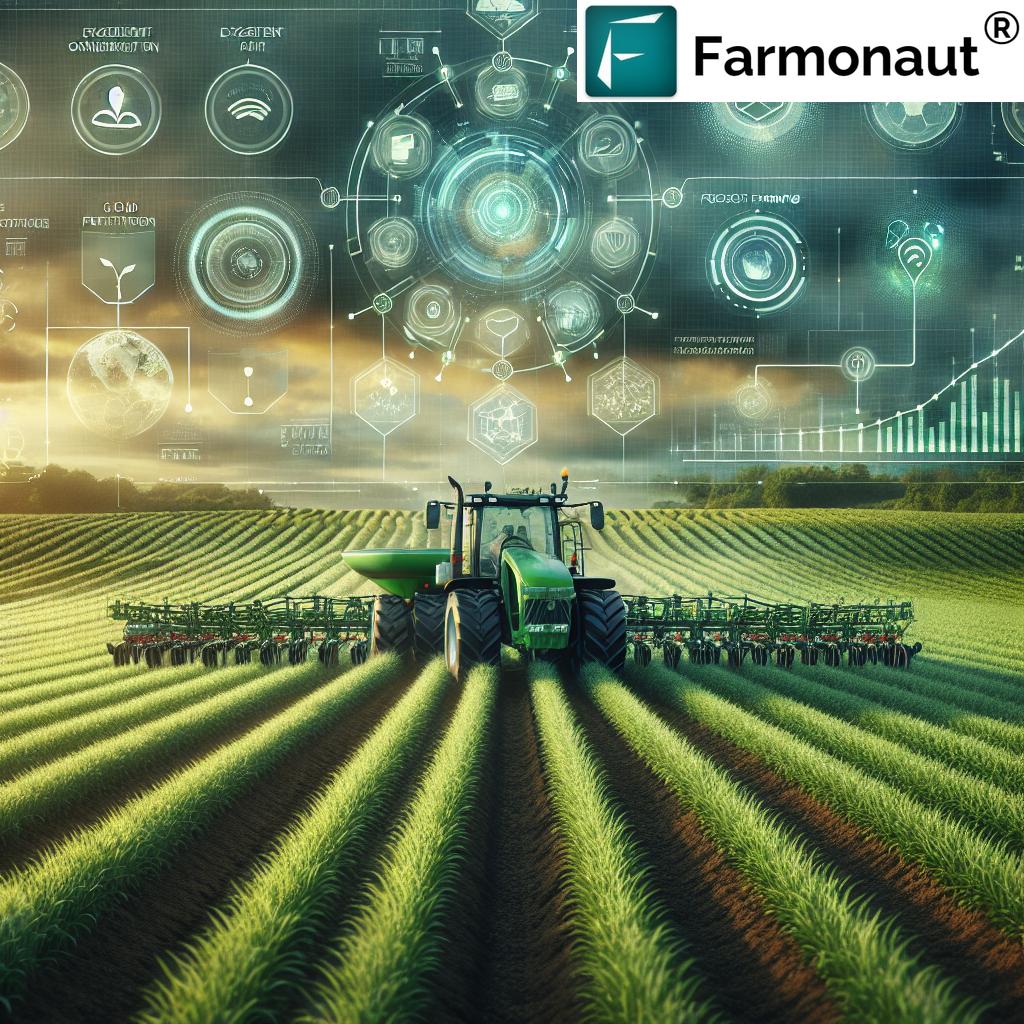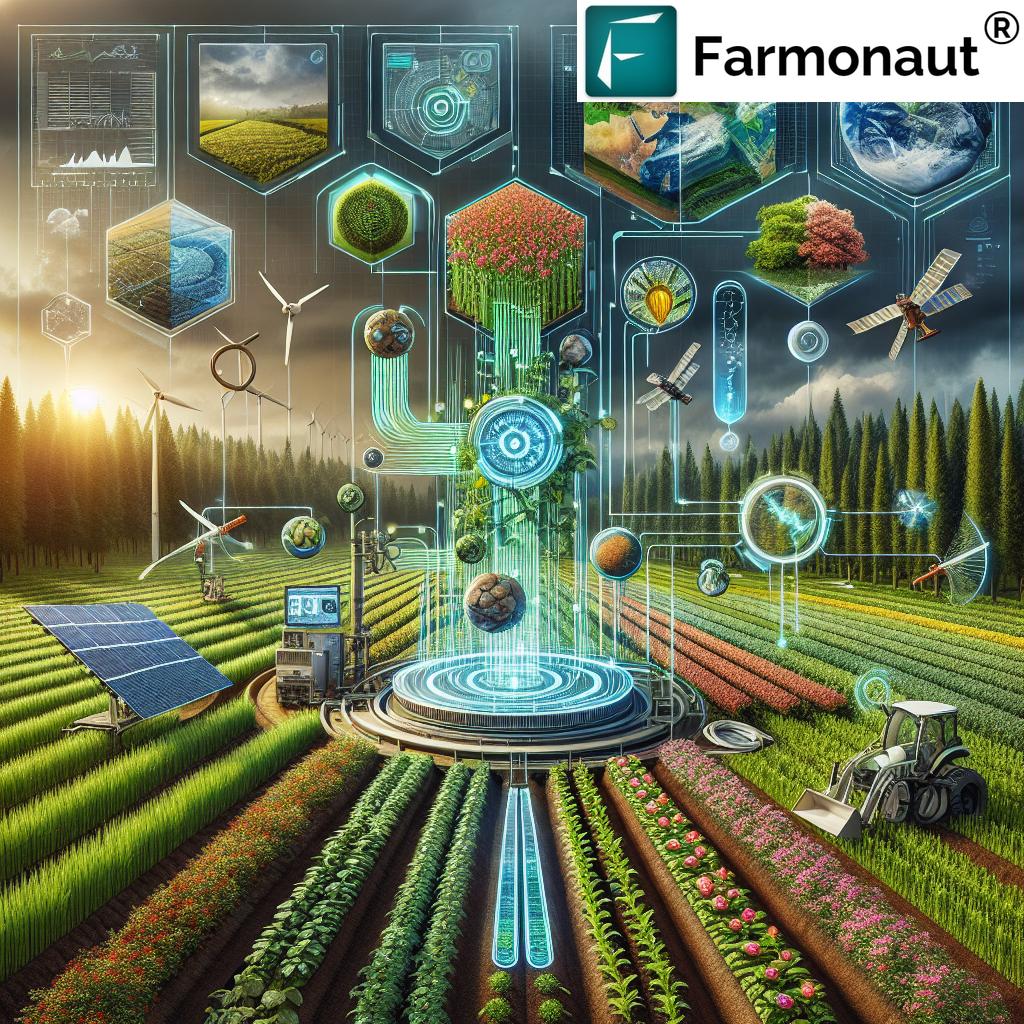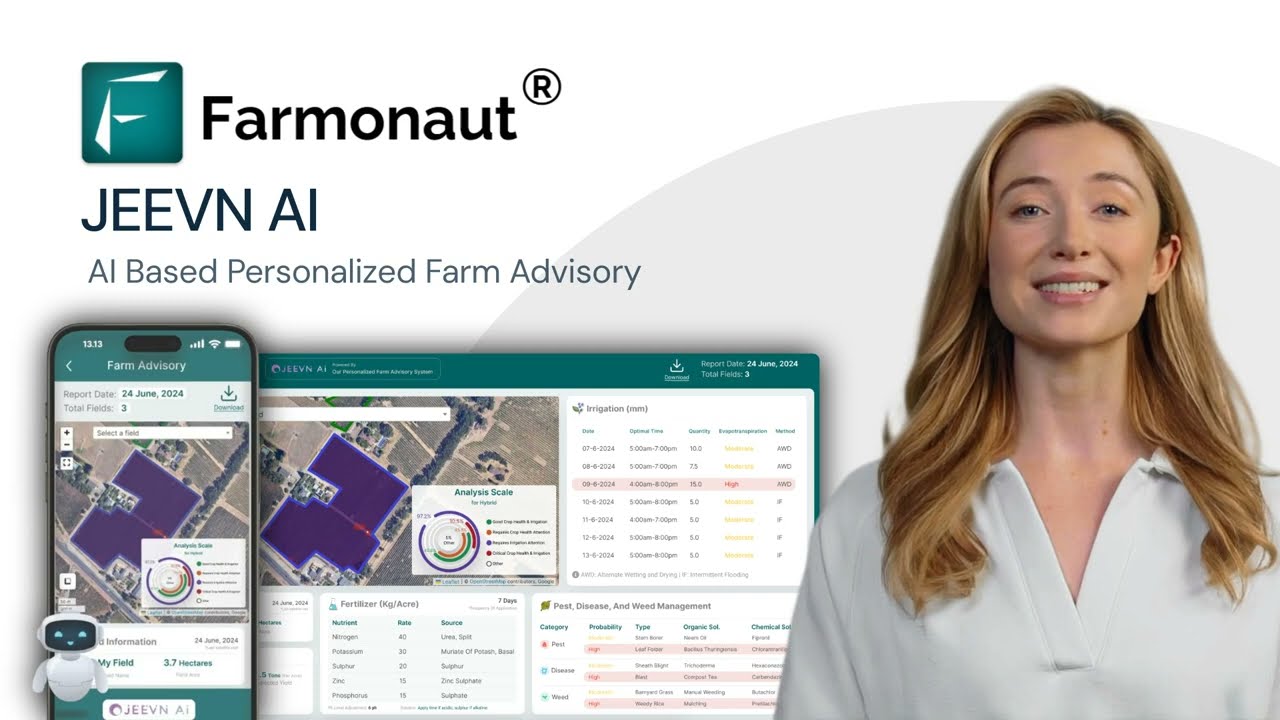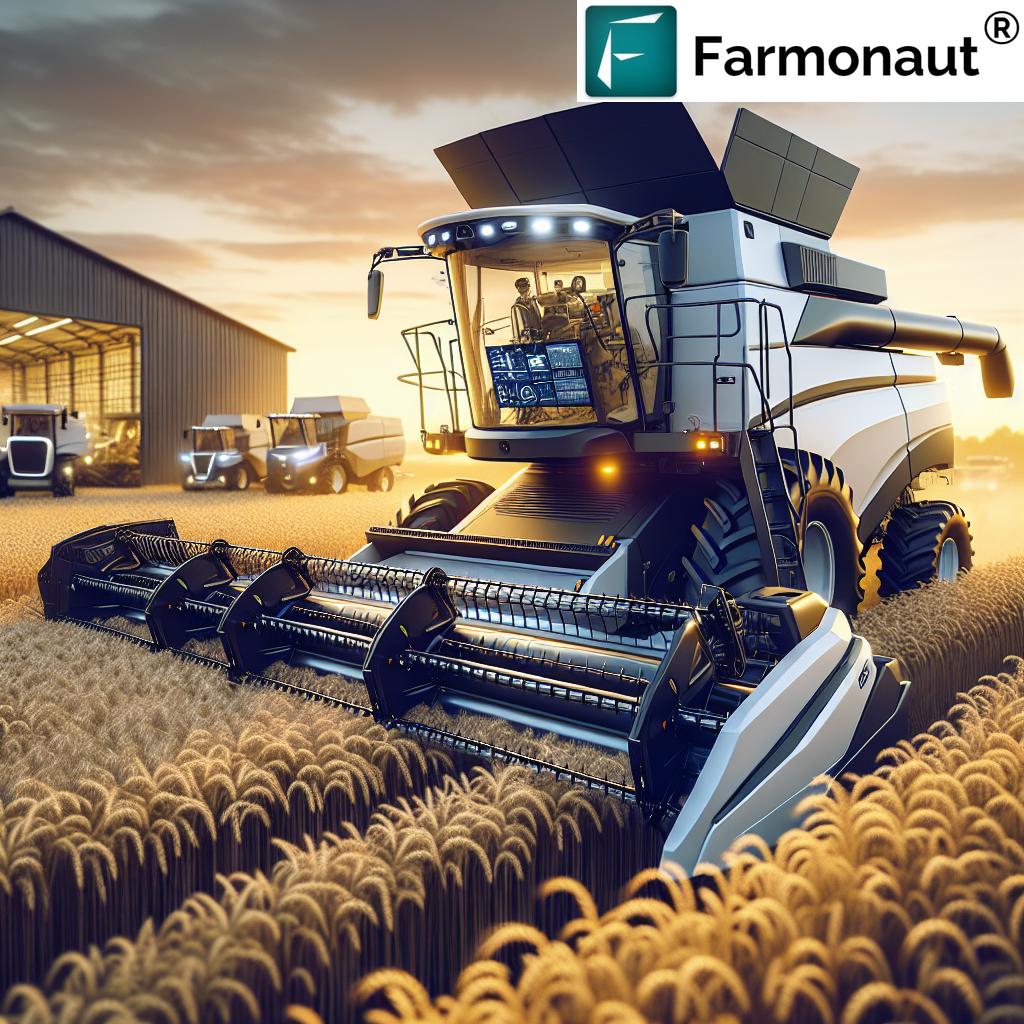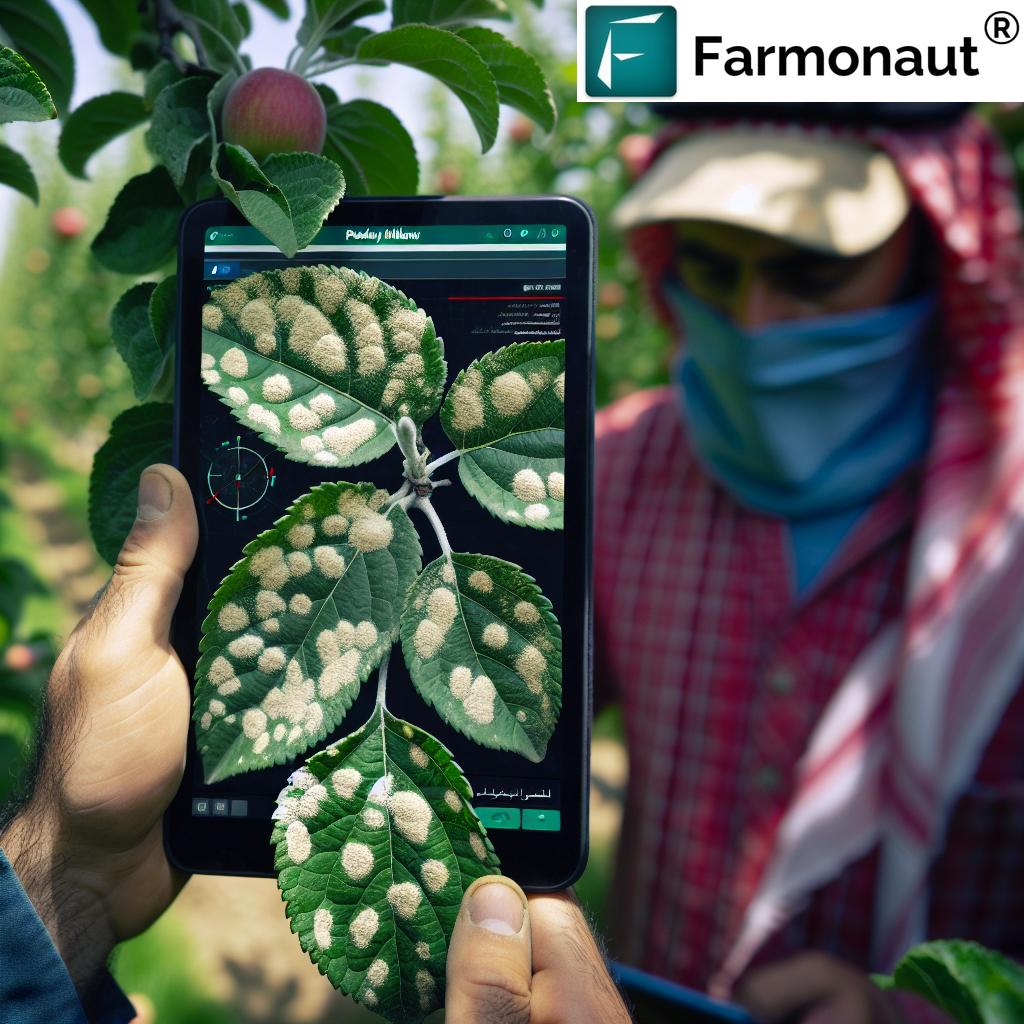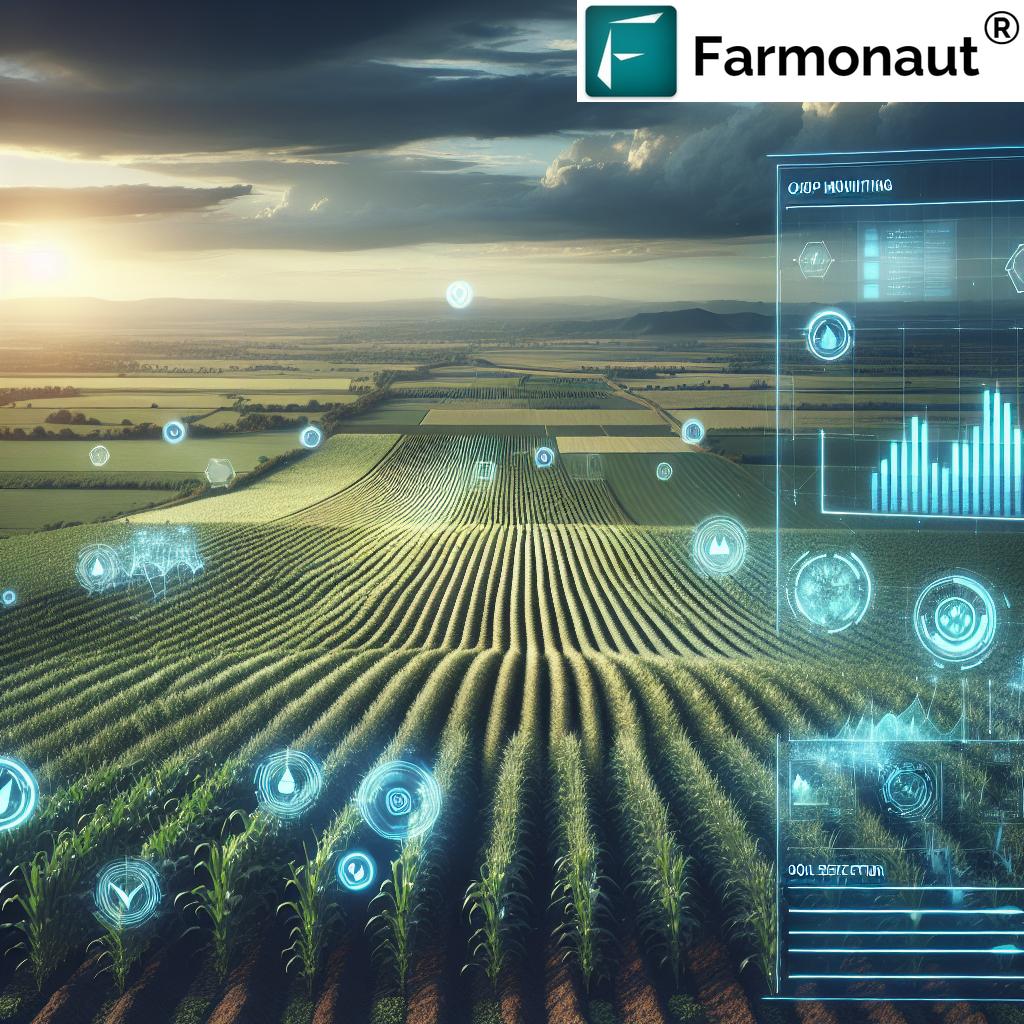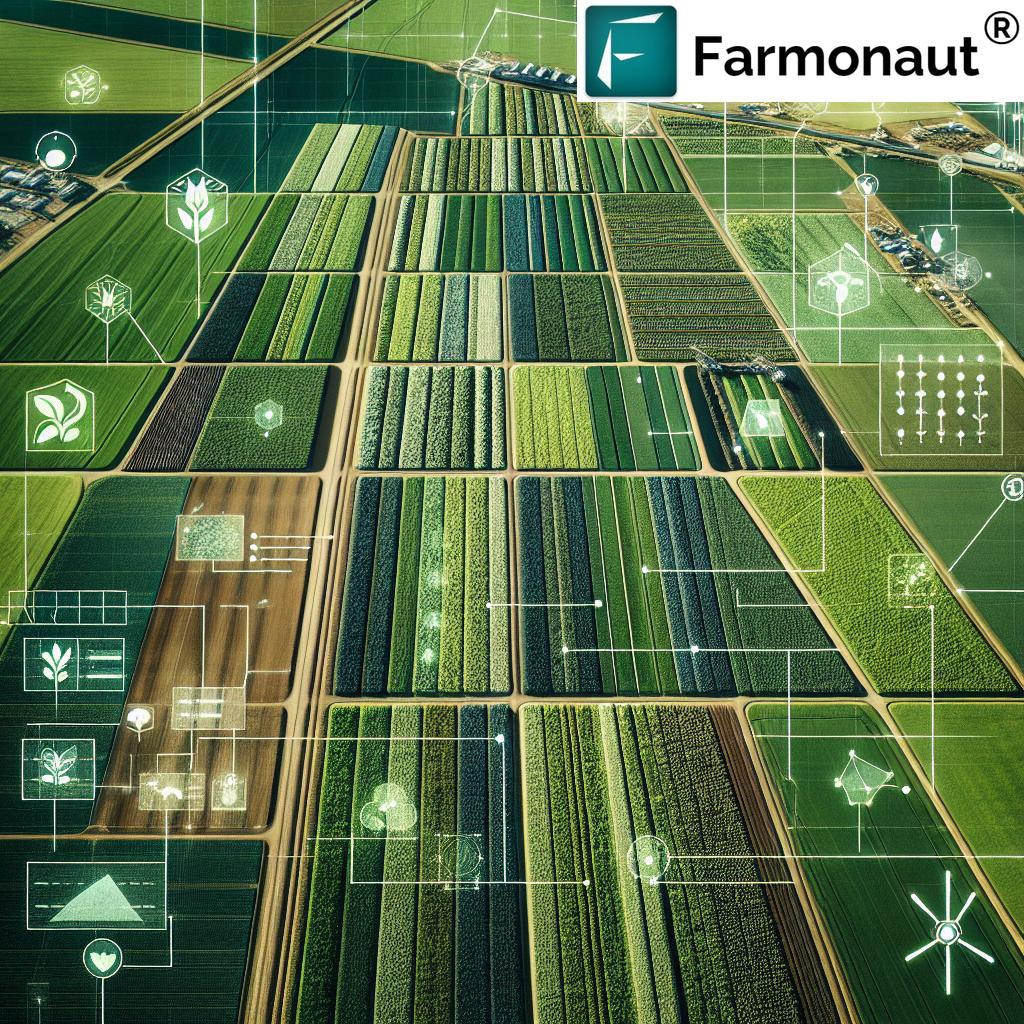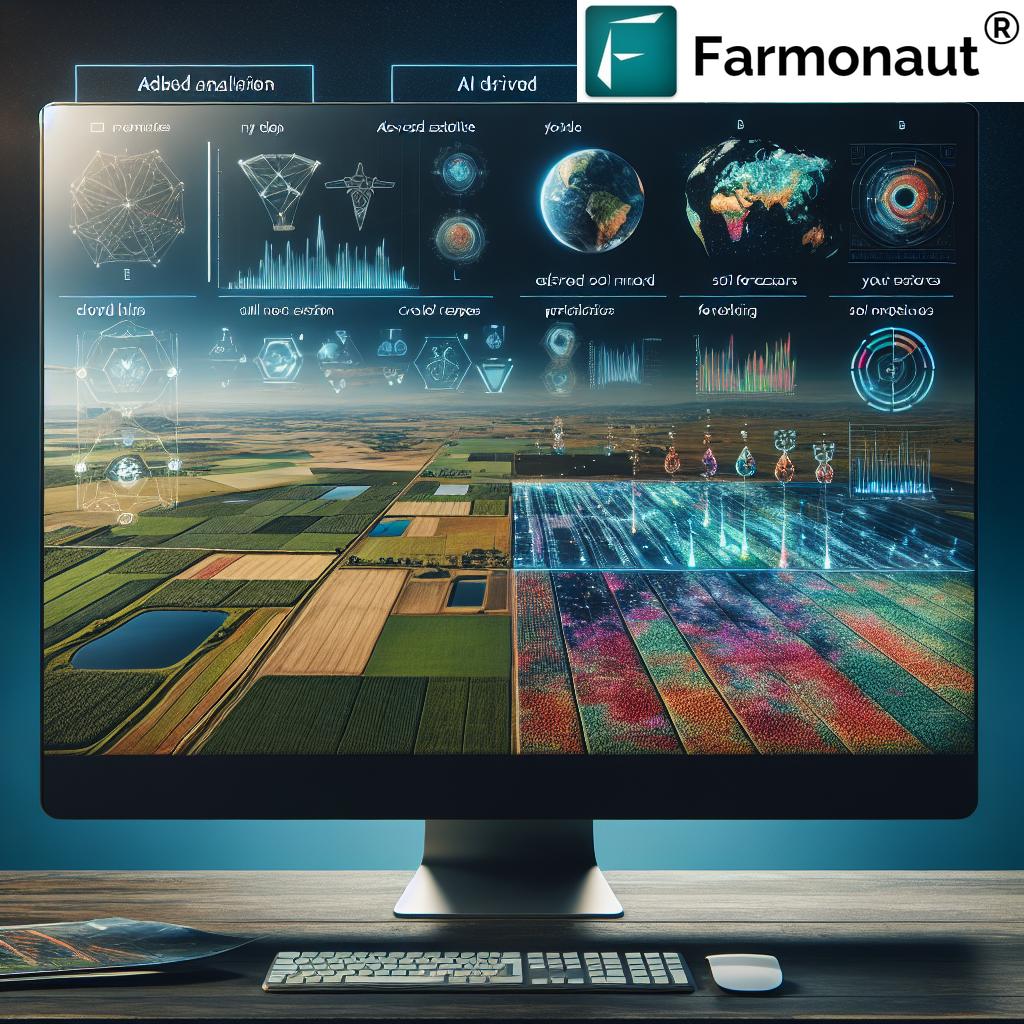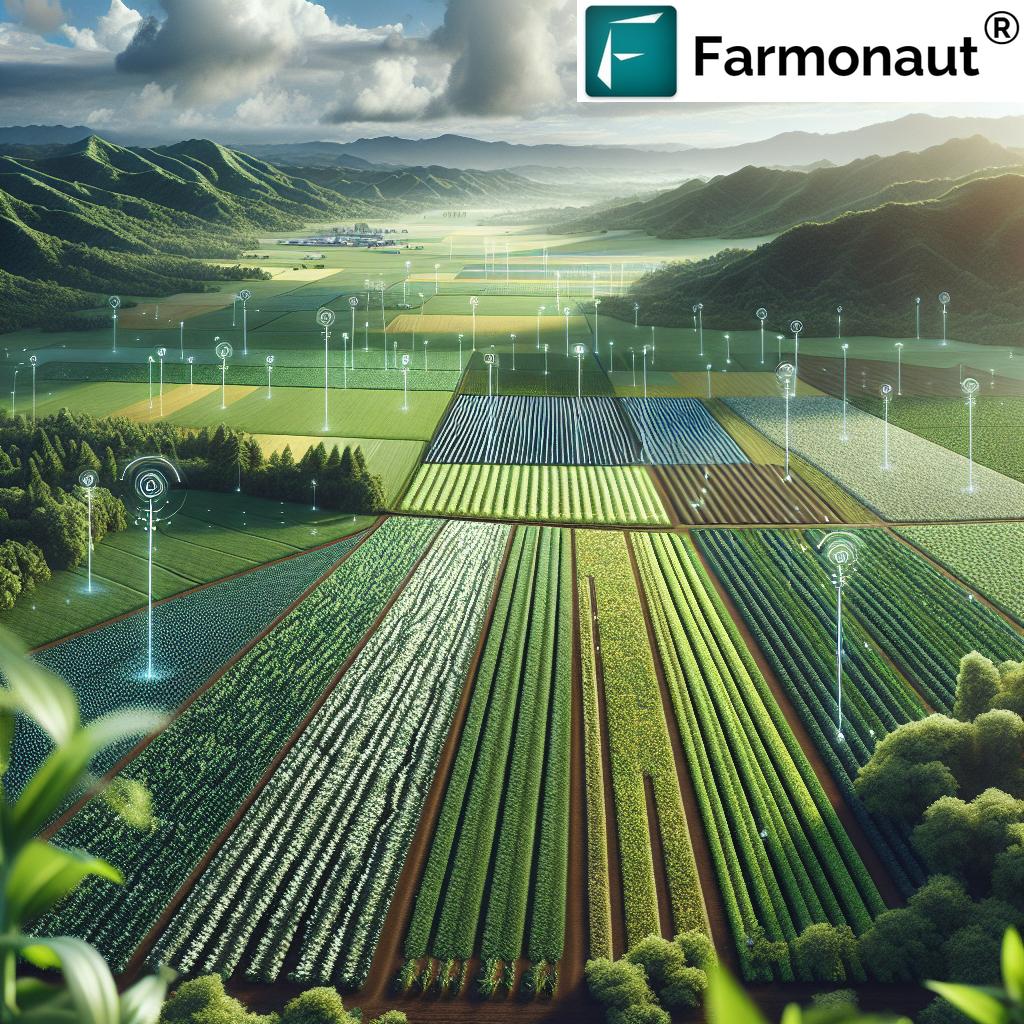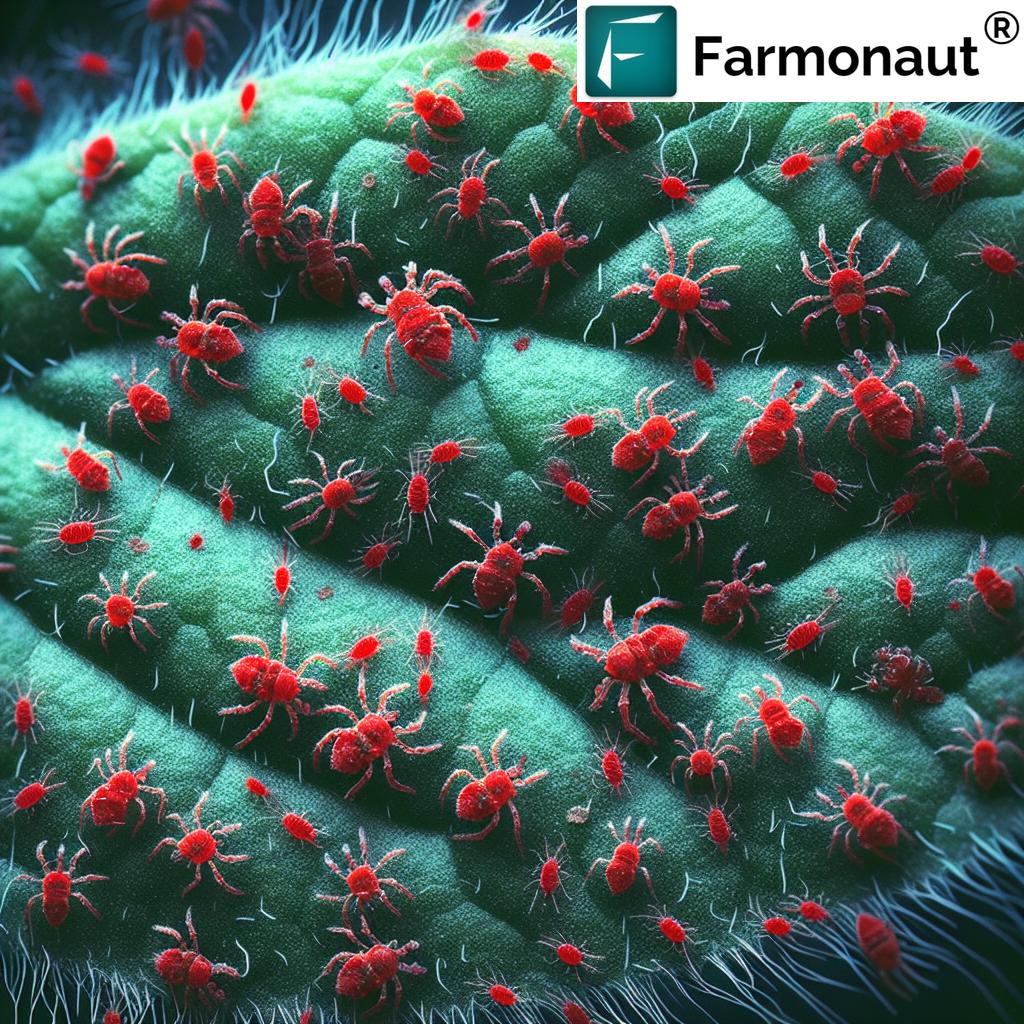Agriculture Insights: 7 Powerful Digital Farming Innovations
Agriculture is no longer just about soil, seeds, and seasons—it’s entering a transformative era driven by digital innovation, environmental necessity, and data-centric strategies. The integration of digital agriculture, precision farming techniques, AI in crop management, and climate-smart agriculture practices is radically reshaping the landscape of farming, boosting productivity, efficiency, and long-term sustainability for farmers worldwide. This shift is rewriting the rules for the entire agricultural value chain, making the food production system smarter and more resilient to climate change and other emerging challenges.
In this comprehensive exploration, we uncover the seven most powerful digital farming innovations that are revolutionizing agriculture, empowering farmers and agribusinesses, and building a robust foundation for a sustainable, efficient, and thriving future. From precision agriculture and AI-driven crop management to the integration of smart farming tools, nanotechnology, and blockchain traceability, these advancements are at the forefront of modern agricultural technology. We’ll also look at how Farmonaut—a leader in agricultural technology—contributes to these transformations with accessible, data-driven solutions for farmers and businesses.
Digital Agriculture: The New Frontier
Digital agriculture (sometimes called smart farming or e-agriculture) is all about using advanced technologies and data analytics to collect, store, analyze, and share critical agricultural data for better farm management. By integrating precision farming, AI, machine learning, IoT, drones, satellites, and cloud computing into the day-to-day work of farmers, agriculture is undergoing a profound technological overhaul.
Key aspects of digital agriculture include:
- Real-time data collection and monitoring: Through sensors, drones, and IoT networks, information about soil conditions, crop health, pests, and weather patterns is continually gathered and analyzed.
- Artificial intelligence and machine learning: These technologies process vast datasets from multiple sources, providing actionable insights for optimizing planting schedules, pest detection, and improving the overall efficiency of crop management.
- Cloud computing: Centralizes data storage and makes farm information accessible anywhere, anytime.
- Satellites: Provide comprehensive, field-wide monitoring solutions on a scale impossible to achieve with only ground-based tools.
The net result? Improved productivity, increased farm resilience, resource optimization, and the possibility of entirely new levels of sustainable crop management.
The 7 Most Powerful Digital Farming Innovations Transforming Agriculture
1. Precision Farming Techniques: Enhancing Productivity & Sustainability
In essence, precision agriculture is about giving each square meter of the field exactly what it needs—no more, no less. By monitoring and managing field variability with a suite of digital tools, farmers can apply water, fertilizers, and pesticides more efficiently, minimize waste, and boost overall sustainability and productivity.
- Advanced technology tools:
- GPS-guided tractors ensure accurate sowing and input application.
- Drones provide aerial views for plant health assessment and pest detection.
- Soil sensors analyze moisture levels and nutrient content in real time.
- Data-driven decisions:
- Field-level data helps optimize input use, reduce environmental impact, and maximize yields.
- AI and machine learning enable real-time adjustments, predictive analytics, and forecasting for better planning.
These precision farming techniques form the backbone of modern agriculture—empowering farmers with the tools to improve agricultural productivity while adapting to climate change and reducing costs. Farmonaut’s satellite-based monitoring is a prime example, offering valuable insights on crop health, soil moisture, and optimal resource usage via affordable, easy-to-access digital channels. Learn more about Farmonaut’s precision agriculture platform here.
Did you know?
“Digital agriculture tools can reduce water usage by up to 30% through advanced data-driven irrigation management.”
2. Climate-Smart Agriculture Practices: Building Resilience in a Changing Climate
Climate-Smart Agriculture (CSA) strives to make agricultural systems sustainably productive, resilient to adverse weather, and efficient in reducing environmental impact. CSA focuses on three main objectives:
- Increasing productivity and income sustainably.
- Adapting agricultural systems to climate change.
- Reducing or removing greenhouse gas emissions where possible.
Examples of climate-smart agriculture practices:
- Diversified crop rotations and integrated farming systems
- Efficient irrigation management and water-saving technologies
- Soil conservation and organic farming practices
- Agroforestry for enhanced biodiversity
- Real-time weather data integration for adaptive decision-making
Farmonaut supports CSA with carbon footprint tracking and satellite-based monitoring that helps farmers measure, report, and reduce their emissions. This empowers agricultural businesses to remain compliant with sustainability goals and regulations. Read about Farmonaut’s carbon footprint solution here.
3. Nanotechnology in Agriculture: Monitoring Crop Health at a Molecular Level
The fusion of nanotechnology and agriculture represents the next major leap in monitoring nutrient levels, detecting soil contaminants, and disease management. Nanosensors—tiny devices embedded in the soil or attached to plants—can collect real-time data at the molecular level, enabling incredibly precise interventions.
- Nanotechnology use cases in agriculture:
- Monitoring soil nutrients and pH on a hyper-local scale
- Detecting toxins, pathogens, or stress in crops before symptoms become visible
- Releasing agrochemicals (fertilizers/pesticides) in a targeted, controlled way
While this technology is still emerging, its potential to boost yields, reduce resource use, and minimize environmental impact is enormous. Ongoing research is essential to ensure these advances are safe for ecosystems and human health, reinforcing the importance of innovation in nanotechnology in agriculture for the sustainable future of food systems.
4. Integrated Farming Systems: A Holistic Model for Sustainability
Integrated farming systems (IFS) are holistic models that combine different agricultural enterprises such as crop cultivation, livestock, aquaculture, and forestry. The aim? Diversify income, improve resource utilization, and enhance resilience against climatic and market risks.
- Core ideas behind IFS:
- Biodiversity promotion via mixed cropping, multipurpose trees, and habitat enhancement
- Waste resources from one sub-system serve as inputs for others (e.g., livestock manure for crops)
- Risk is minimized via diversification—if one segment underperforms, others might thrive
- Better environmental stewardship with lower external inputs and improved soil health
Adopting integrated farming systems helps farmers adapt to climate change challenges while maintaining sustainable productivity and profitable operations. For example, Farmonaut’s advisory and satellite-based monitoring platform empowers both small and large-scale IFS with real-time insights and resource optimization for crops, plantations, or forestry management. Discover more about Farmonaut’s advisory tools for integrated farming here.
5. AI in Crop Management: Data-Driven Decision Making
Artificial intelligence is the brain behind the smart farm. The integration of AI in crop management brings predictive analytics, pattern detection, and decision support right into the hands of farmers. By analyzing historical and real-time datasets, AI can help optimize irrigation, fertilizer use, pest management, and harvesting—boosting yields and minimizing resource wastage.
- How AI enhances crop management:
- Weather pattern prediction and intelligent planting schedules
- Pest and disease outbreak forecasting from multispectral satellite imagery
- Detection of crop stress and health anomalies using deep learning on field data
- Actionable next steps: time for irrigation, precise fertilizer dosages, pest control strategies, and yield prediction
Farmonaut’s Jeevn AI Advisory is built on precisely these principles—offering personalized, satellite-powered recommendations for every plot, delivered in real time via mobile, browser, and API platforms. See how Jeevn AI is shaping the future of crop management in this video:
- Benefits of AI in agriculture:
- Reduces guesswork with data-backed advice
- Optimizes resource allocation across inputs
- Improves yield forecasting and supply chain management
- Addresses challenges like labor shortages, extreme weather conditions, and soil nutrient depletion
6. Smart Farming Tools & IoT: Bridging Technology and the Field
Smart farming is where the potential of sensors, connectivity, and IoT devices meets the reality of agriculture. By bringing the Internet of Things (IoT) to the farm, it’s now possible to remotely monitor, control, and optimize agricultural systems from soil to silo.
- Components and applications of smart farming tools:
- Soil, moisture, and crop health sensors networked across fields
- Connected weather stations for hyper-local forecasts
- Automated irrigation and climate control systems for greenhouses
- Notifications and insights delivered straight to a farmer’s smartphone
IoT-enabled smart tools directly enhance farm management, reduce environmental impact, improve productivity, and streamline data workflow for both smallholder and large-scale farming operations. Farmonaut’s satellite-powered platform integrates seamlessly with smart farming tools, making data-driven farm management accessible and actionable for all. Explore Farmonaut’s fleet and resource management tools here.
If you’re a developer or business looking to integrate satellite-based weather and crop data into your systems, see the Farmonaut API here, with detailed developer documentation here.
7. Blockchain-Based Traceability: Securing the Food Supply Chain
Supply chain transparency is critical for modern agriculture—consumers and regulatory bodies demand verifiable sourcing, reduced fraud, and higher food safety. Blockchain-based traceability solutions in agriculture ensure that product provenance is recorded, tamper-proof, and accessible at every stage—from the field, through processing, and right to the retailer.
- Benefits of blockchain in agriculture:
- Prevents fraud and counterfeit product entry
- Enables immediate recall in case of food safety incidents
- Increases consumer trust through transparency
Farmonaut’s blockchain-enabled traceability is designed to deliver exactly these benefits—offering transparent, secure, and scalable supply chain data to agri-businesses and food companies worldwide. Learn more about Farmonaut’s traceability system for food and textiles here.
Comparative Innovations Overview Table
To help you quickly compare the 7 powerful digital farming innovations, here’s a concise side-by-side table highlighting the core technology, main benefits, estimated adoption rates, and sustainability impact for each:
| Innovation Name | Core Technology | Main Benefits | Adoption Rate (2023 est.) | Sustainability Impact |
|---|---|---|---|---|
| Precision Farming Techniques | GPS, drones, sensors, satellites, AI | 10-20% yield increase, 15% input savings | ~28% (advanced economies) | 30% water & fertilizer reduction |
| Climate-Smart Agriculture | IoT, AI, adaptive farming models | Improved resilience, reduced losses | ~18% | 15% GHG emission reduction |
| Nanotechnology in Agriculture | Nanosensors, nano-fertilizers | Ultra-precise monitoring, quality gains | <5% (emerging adoption) | Lower chemical runoff |
| Integrated Farming Systems | System design, analytics | Income diversification, risk reduction | ~22% (varies by region) | Resource cycling, soil health improvement |
| AI in Crop Management | AI, machine learning, satellites | Optimal decisions, cost savings | ~12% | Inputs reduced by 10-20% |
| Smart Farming Tools & IoT | IoT, mobile apps, sensors | 24/7 monitoring, less labor needed | ~35% (developed regions) | Energy & water use down 20-30% |
| Blockchain Traceability | Blockchain, digital platforms | Supply chain trust, fraud prevention | ~7% | Transparency, food waste reduction |
Farmonaut’s Digital Agriculture Solutions: Making Innovation Accessible
At Farmonaut, we are committed to making precision agriculture and smart farming affordable and accessible for every farmer, regardless of farm size or location. Our platform leverages cutting-edge satellite imagery, AI, and machine learning to provide comprehensive services for crop monitoring, real-time farm advisory, fleet/resource management, and blockchain-traceability—all via easy-to-use mobile or browser apps.
- Satellite-based crop health monitoring: Track plant health (NDVI, soil moisture, stress signs), optimize watering and fertilizer, and predict risks and maximize yields—all from your phone or desktop!
- AI-based Jeevn Farm Advisory: Receive personalized guidance, custom weather forecasts, and expert crop management strategies tailored to your exact field.
- Blockchain-enabled traceability: Build consumer trust and better market access by verifying every stage in your supply chain.
- Fleet and resource management: Reduce operational costs and increase efficiency with real-time vehicle and equipment tracking. (Find out more about Farmonaut’s fleet solutions here.)
- Carbon footprinting: Accurately measure and reduce your environmental impact—stay compliant with sustainability regulations and appeal to eco-conscious markets. (See Farmonaut’s carbon footprinting tool here.)
- Crop loan and insurance: Satellite-based farm verification improves access to agri-loans and insurance, reducing fraud and speeding up approvals. (Discover benefits here.)
For software developers and agri-businesses, our API suite enables you to easily plug Farmonaut’s remote sensing data, crop advisories, and weather analytics into your own digital platforms. Check out the API here and access the developer docs here.
Key Challenges and Future Directions in Digital Agriculture
As promising as digital agriculture and precision farming innovations are, real-world adoption still faces challenges:
- Technological access: Reliable internet, device availability, and affordable service packages are essential—but many rural areas are still underserved.
- Digital literacy and training: Farmers need practical education and ongoing support to maximize benefits from advanced tools and platforms.
- Affordability for smallholders: Even cost-effective solutions must be scalable and accessible to farmers in developing regions.
- Data privacy and security: As more personal and farm-related information is collected and stored, robust security and transparent data policies are critical for trust.
- Ongoing research and innovation: Technologies like nanotechnology, AI, drones, and blockchain will require further R&D to meet evolving agricultural needs, scale globally, and ensure ecological safety.
The future of agriculture is digital, data-driven, and sustainable. Addressing these challenges through cooperation, policy support, and investment in education and infrastructure will help maximize the transformative potential of these innovations.
FAQ: Digital Farming Innovations
Digital agriculture involves the integration of advanced digital technologies—such as satellite imagery, IoT, AI, blockchain, and cloud computing—into all aspects of the agricultural value chain. It enables farmers to collect, analyze, and act on field and market data for better decision-making and improved productivity.
Q2: How do precision farming techniques benefit farmers?
Precision farming techniques help minimize waste by applying exactly the right amount of water, fertilizer, and pesticides for maximum yield and minimum environmental impact. This data-driven approach boosts productivity, lowers costs, and increases farm sustainability.
Q3: What are climate-smart agriculture practices?
Climate-smart agriculture (CSA) focuses on increasing productivity, building resilience to climate change, and reducing greenhouse gas emissions. Methods include crop diversification, efficient irrigation, and conservation practices that maintain soil health and reduce risk.
Q4: How does AI transform crop management?
AI reviews large datasets to detect patterns, forecast weather, predict crop health issues, and provide real-time, tailored advice. This helps farmers optimize operations, reduce losses, and increase yields.
Q5: What is the advantage of blockchain-based traceability in agriculture?
Blockchain adds transparency, security, and trust to the food supply chain. It records every step from field to market, ensuring authenticity, preventing fraud, and enabling rapid response in the event of food safety issues.
Q6: How can smallholder farmers access these digital innovations?
Platforms like Farmonaut democratize advanced digital farming tools by leveraging satellite data, AI, and cloud solutions, making them affordable and easy to access via smartphones or web browsers for individual farmers, agribusinesses, and large enterprises.
Conclusion: Shaping the Sustainable Future of Agriculture
The digital transformation of agriculture is underway and unstoppable. Precision farming techniques, AI-powered crop management, climate-smart practices, blockchain traceability, smart tools, and nanotechnology are working together to make farming more productive, efficient, and sustainable.
At Farmonaut, we see our mission as making these transformations accessible for all—empowering farmers, agribusinesses, and governments with actionable data and digital tools to optimize productivity, safeguard sustainability, and adapt efficiently to climate change. We invite you to join the global movement towards smarter, more resilient food systems—explore the future of digital agriculture and precision farming with us.
Ready to transform your agricultural practices with data and innovation? Try Farmonaut now and be a part of agriculture’s digital revolution.


